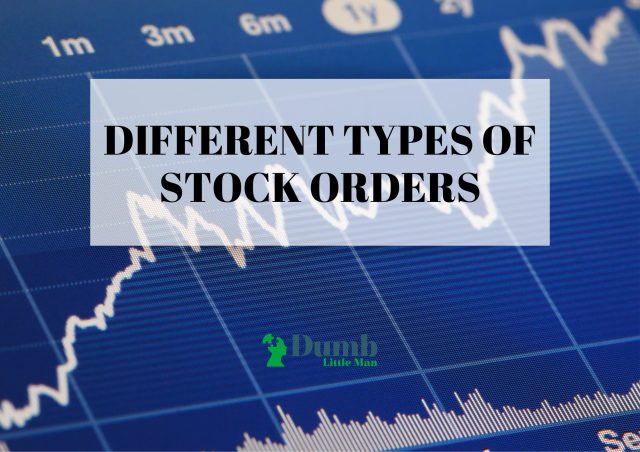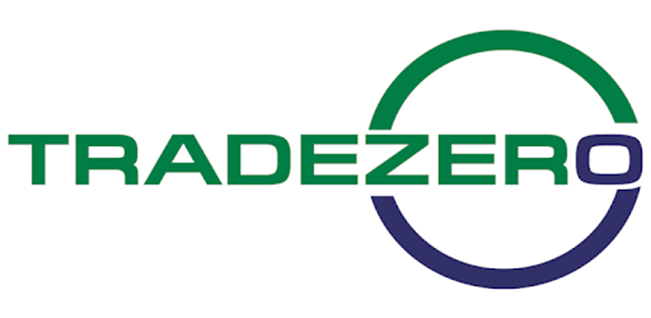14 Different Types Of Stock Orders: A Trader Beginners Guide
By Wilbert S
January 10, 2024 • Fact checked by Dumb Little Man

Want to jump straight to the answer? The best Stock Brokers are Tradestation and Tradier
The #1 Stocks and Forex Trading Course is Asia Forex Mentor
Buying stocks wouldn’t have to be done on the floors of the NY Stock Exchange; you could do that on your smartphone from the convenience of your sofa. However, regardless of how simple it can be to acquire a share nowadays, it is critical to be knowledgeable about what you’re undertaking.
You’ll want to start trading stocks when you’ve hired a stockbroker. When doing so, you need to familiarize yourself with the various sorts of trade orders publicly available and the scenarios in which you would utilize them.
It’s possible that you won’t utilize every one of these orders, but you don’t know. Therefore, it’s beneficial to be informed of the options available to you.
You’ll discover about the numerous types of trading orders that may post with an agent or broker in this good introductory stock price trading jump lesson. So let’s get started!
14 Different Types of Stock Orders

Knowing the various flow types if you’re day dealing or speculating is critical because knowing about using them correctly will offer you an edge in the industry. The orders that can place are determined mainly by the broker you deal through or the exchange market you utilize.
You’ll probably have at minimum three distinct ways of purchasing and selling stocks, regardless of the broker or exchange market prices you use. Here following are some most prevalent order types:
Most Common Types:
#1. Stop Orders
Stop orders, also called stop loss order, is used to restrict losses if a deal goes poorly.
When setting to buy stop order, traders specify a value at that they want the flow to stop. For example, suppose the stock falls to that level on bullish transactions or rises on borrowers default. In that case, the trailing stop order to sell will become a market order, or the units are liquidated or purchased instantly to seal the deal.
Stop orders to sell provide considerably greater flexibility to the dealer. When the stopping price is met, to sell stop order becomes a limited order instead of a current market price buy. As a result, shares can only be last traded price or acquired at a specified price or more fantastic if you place a limit prices request.
#2. Market Orders
It’s the most popular order form that most folks assume when they want to purchase or sell shares.
Whenever you make a market order to acquire stock, you specify the amount of stock you wish to purchase, and the order is filled at the best price right away.
The same would be true when selling stock. Again, enter the number of units you want to trade, and the transaction will be completed at the current market price rate.
#3. Limit Orders
Limit orders are created to offer the buyer greater control over their money. Such orders are only fulfilled if the required and specified price is met.
For instance, if you have a limit price buy or sell order ABC company for $10 or greater and the actual cost is $9.99, then the deal would not be performed till the exact price increases slightly and somebody reimburses the us$ of $10 or even more.
Stop limit order is essential for trading equities with volatile prices since they ensure you do not even overspend or underpay if the current price moves dramatically in the moments when you place your order.
Other Types of Stock Orders:
#4. Market If Touched Orders
A market-if-touched order has been a conditional request that must be activated before it may be executed. For example, when a preset specified price is achieved, the buy and sell is triggered or changed to a market order. Though this may appear to be a price limit, there is one crucial distinction.
Buy limit order if the current price is equal to or exceeds the price limit value. So, for instance, when you’ve 10,000 shares to offer for $10 each and have purchasers for 2,000 well before the current price drops, the other 8,000 shares would not be provided until the market price goes up.
#5. All or None order (AON) to sell limit orders
All or None orders are those that could only be completed on their whole. Whereas if a limit order costs cannot be completed in its entirety for whatever reason, it stays in play until the criteria for the entire order to be performed are satisfied or the request is canceled.
#6. Immediate or Cancel (IOC) Order to sell limit order
An immediate or cancel order, often known as an IOC order, seems to be a purchase or sale order that should be filled immediately. The order, though, isn’t to be completed on its whole. So any order component that can be fulfilled directly will be canceled when executed.
#7. Fill or Kill (FOK) Order to sell limit orders
FOK orders are a hybrid of AON & IOC instructions. All of those are orders intended to be carried out in their entirety right away. If a portion of an order cannot be filled immediately, the whole order will be executed or canceled.
#8. Good Till Canceled (GTC) Order
GTC orders, or good ’til canceled orders, represent orders that stay available until the dealer fills or cancels them. However, most brokers only permit such orders to be active for a specific time, varying significantly from one broker to the next. GTC orders, for instance, can be made available for ninety days at Robinhood.
#9. Take Profit Order
Take-profit orders are one form of limit order used to end a trade once the investor has reached their profit target. For example, assume you bought Xyz stock for $10 a share, intending to hold it till you made a 10% gain on the investment.
In this situation, you’d place a take gain order for $11 a share and implement it.
Your investment will be transferred, and your earnings will be sealed as quickly as Xyz stock reaches $11 a share. However, when the stock value never hits $11, the order will never be fulfilled and will continue until canceled.
#10. Day Order
As the name implies, day orders are purchase or sell orders that will be canceled after the trading day. Monday – Friday, from 9:30 until 4:00 p.m. Eastern, are existing trade market hours. Thus, if you placed a day purchase at 1:00 p.m. on Wednesday, it’d be valid till it was fulfilled or the market shut at 4:00 p.m.
#11. One Sends Other Orders
If an investor decides to bring another order after completing their prior transaction, they submit other bids. For instance, if a dealer wishes to purchase Stock Xyz for $100 for each share and subsequently sell to the highest bidder, they’ll need to place a two-part transaction.
The first portion would be a specified limit price plan for a $100 / share acquisition of Stock Xyz. The second step is to offer Stock Xyz for $105 a share. Many orders are entered into the network simultaneously and performed in chronological order.
#12. One Cancels Other Order
When traders wish to profit from one trade between the two possibilities, they can employ one that cancels the other order. As an illustration, even when a trader wants to do business with Stock Xyz for $100 a share and Stock ABC for $50 a share, someone who achieves the stipulated specific price first wins.
If Stock Xyz hits $100 a share, the purchase is filled, and the option for Stock ABC is canceled.
#13. At the Opening Orders
Similarly, orders to purchase or sell shares that will be performed at the market open are known as the opening orders. These orders are market orders once the share market starts, and they will be executed at the correct cost as soon as practicable.
#14. Tick-Sensitive Orders
A tick would be the smallest quantity of funds that can be moved in any way to sell securities. Tick-sensitive orders allow businesses to convert ticks in existing holdings into acts.
Let’s imagine you believe a stock may rise, but you don’t want to chance to be incorrect. You may set a tick-sensitive order to sell stocks with another downward tick to safeguard yourself from deficits and seal any gains.
You abandon the position as soon as the stock achieves the minor feasible negative move. Conversely, you can lock in winnings on the first downhill tick if the market price makes multiple ticks higher and then ticks lower.
Featured Investing Broker of 2024
| Broker | Best For | More Details |
|---|---|---|
 | Advanced Non US Traders Read Review | securely through Avatrade website |
 | Intermediate Non-US Traders Read Review | securely through FXCC website |
Overall Broker | securely through Forex.com website | |
 | Professional Forex Traders Read Review | securely through Interactive Brokers website |
| Broker | Best For | More Details |
|---|---|---|
 | Advanced Traders Read Review | securely through Tradestation website |
 | Intuitive Platforms Read Review | securely through Tradier website |
 | Powerful Services at a Low Cost | securely through Tradezero website |
 | Professional Forex Traders Read Review | securely through Interactive Brokers website |
Best Stock and Forex Training Course

The Asia Forex Mentor by: Ezekiel Chew is one of the most in-depth programs about the existing financial markets. This comprehensive program teaches you about equity markets, trading strategies, and managing your trading account.
In the past few years, this team of investors has become the best consultant to various banks and other financial companies.
They’re considered the best advisor because they’ve trained anyone that has come to them to increase their ROI.
By joining our course, you will gain knowledge about trading deals and reach your profit goals.
Most trainers don’t adopt an ROI-driven strategy like Ezekiel’s. It’s a method of defeating the market based on science and mathematics, yet it’s not taught anyplace.
They use their scientific and analytical approach to trading to help large and small businesses and retail traders boost their profitability and return on investment.
| RECOMMENDED TRADING COURSE | REVIEW | VISIT |
|---|---|---|
 | #1 Forex, Crypto and Stocks trading course. Ranked most comprehensive by Investopedia and Best by Benzinga. Free to Try! |  |
Conclusion: Different Types of Stock Orders

Investing effectively with the in-stock exchange may give several opportunities to develop wealth, as well as the possibility for significant investment returns. Volatility, however, is an essential aspect of the share market.
You can have highs and lows as a trader. As a result, to thrive, newbies must understand how the financial sector operates.
A substantial financial setback may lead to losing confidence at first. Stock prices change due to a range of variables, including news, economics, and advanced analytics.
Implementing and analyzing the ideas or suggestions in this article will assist you in having a better understanding of stocks as well as the overall market, enabling you to determine whether to join or leave a trade relying on the data provided.
The stock industry is full of unknowns, and no one can anticipate a stock’s valuation with certainty. However, when you’re a beginner, keeping up with the newest news on stock projections can help make better trading decisions possible using the resources available.
Types of Stock Orders FAQs
Is it better to use market orders or limit orders?
When you want to trade on the open market, use a market order. It would be best if you had a speedy turnaround at any costs. You’re buying a highly liquid stock with a tight bid-ask gap. You’re just dealing with a few stores.
When you’re not sure what to do, use a limit order. You’ll want to indicate your certain price, which may differ from wherever the item is now trading. For example, you would like to invest in an illiquid commodity or one with a big bid-ask gap or when dealing with a large number of stocks.
What are order types best for day traders?
With day traders, trailing stop limit orders remain the recommended order form. To acquire shares, the dealer must add a specific limit price or cost. Traders can use this form of handling the cost of their share price purchases.
When withdrawing liquidity off the marketplace by purchasing on the request, it provides for minimum price controls, and when releasing on the bidding, it offers for pricing floors.
Riding the coattails is perhaps the most straightforward trading plan for a newbie, as it is built on the assumption that the momentum is your buddy.
Betting against the marketplace crowd is referred to as contrarian investment. Whenever the marketplace increases, you sell a stock, and then when the economy drops, you purchase it.
As a novice trader, it might be a strict trading strategy. Certain price gouging and scalping the headlines need mental focus and quick investment decision-making, which can be challenging for a novice.
Wilbert S
Wilbert is an avid researcher and is deeply passionate about finance and health. When he's not working, he writes research and review articles by doing a thorough analysis on the products based on personal experience, user reviews and feedbacks from forums, quora, reddit, trustpilot amongst others.


